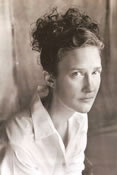|
Among the stories I liked best as a child were the mysterious and melancholy tales of Beatrix Potter. Despite their superficial, pastel-hued charm, most of the stories—like all of the most enduring of children's classic literature—skirt a dark shore. Death and disaster appear far more often than one would expect in a stories created for innocent children.
In The Tale of Squirrel Nutkin, Old Brown is a menacing owl to whom a line of obedient squirrels like Roman prisoners bear platters of dead mice and fat moles and fish and nuts, offerings to a tyrant emperor as eccentric and unpredictable and dangerous as a psychopath. In The Tale of Jemimah Puddleduck, dogs ravage a duck's brood of helpless hatchlings. In Beatrix Potter's pretty world, with its cunning interiors and cozy domesticity, its sunny, happy surfaces, there is also violence. The stories are delightful, comical, fanciful…and they are also profoundly troubling, evoking a world of forces that behave inexplicably, even brutally, in the face of our terrified politeness, our futile, pathetic efforts at domestic tranquility, our essential goodness and innocence and happiness. There are good things and bad things present in the stories, and it is not easy to pry them apart.
In The Tale of Mrs. Tiggy-Winkle, for instance, a little girl named Lucie loses her handkerchief. In looking for it she discovers a hedgehog washerwoman who lives under a hill in a "nice clean kitchen with a flagged floor and wooden beams." The illustrations for this story evoke a place of surpassing coziness: Mrs. Tiggy-Winkle in a cap and apron and striped petticoat, sitting on a bench before the fire with a cup of tea. At the end of the day, Lucie accompanies Mrs. Tiggy-Winkle on her rounds as she delivers the washed and ironed clothes of the neighborhood creatures. But when Lucie climbs on the stile in the stone wall that separates her family's farm from the dramatic blue hills and turns to say goodnight (that's Beatrix Potter's Lake District in the illustration, perhaps, England's highest mountain, Scafell Pike, and Wast Water winking below), Mrs. Tiggy-Winkle, "who had not waited either for thanks or for the washing bill," is "running, running, running up the hill," small and brown and covered with prickles. The washerwoman has gone, and in her place is nothing but a hedgehog.
As a child, I understood by Lucie's wish to bid Mrs. Tiggy-Winkle goodnight that the story ends with the end of the day, the moment when children playing outside look up, alerted by the change in light, and know it is time to go home. At the end of the story, a strange, sad feeling came over me: there was nothing left of the day, nothing left of Lucie's magical happiness. Perhaps, in fact, Lucie had only imagined the whole thing, a reading of the story's events that felt obscurely troubling. After Mrs. Tiggy-Winkle's bewildering departure—she doesn't even say goodbye!—it was clear to me that all that remained for Lucie were the familiar, prosaic exertions of her evening, routines of face-washing and teeth-brushing and tedious negotiations with parents and siblings, activities that I could imagine easily and with which I was perfectly familiar, what the character of Glory in Marilynne Robinson's novel Home, for instance, calls "difficult, ordinary life."
As an adult I see now that there are suggestions of the story's strangeness from the beginning: the way Lucie and Mrs. Tiggy-Winkle sit on a bench in front of the fire "looking sideways at one another;" Mrs. Tiggy-Winkle's "anxious" look when Lucie first comes to the door, her "frightened" voice when she answers Lucie's knock—has Lucie, as a human child, blundered somehow across a sacred line dividing the real from the magical? Just at the edge of the story's cozy enchantment—like the shadows of evening beginning to descend—is another stranger, darker world, in which things are not what they seem, in which the line between creatures and humans blurs, in which night is falling and day is done, and in which, at the end, we will be left alone to go to sleep, the loneliest and most profoundly private state of human experience.
I returned faithfully, passionately to these stories, drawn helplessly to the complicated, difficult truth at their heart. The sadness I experienced then, as a child with my finger following the words on the page, feels familiar to me now, a complicated melancholy that drifts over me sometimes when I stand at my kitchen sink at night washing dishes. In the black glass of the window over the sink I see my own blurred reflection and the hazy shapes of the kitchen behind me: bright light over the stove, shaded lamp on the counter, cookbook open on the table, red or pink flowers in a vase. I am tired, the day is almost done, there is little left to do before the lights are turned out and the house is quiet. Often at these moments of quiet I find myself thinking of the people I know who have died, and I am vividly aware as I stare into the black glass of the window, that I am alive, I am inside, in my kitchen, my children and my husband nearby, while those others—heartbreaking ghosts pacing the perimeter of the trees at the edge of the field—they are outside, forever outside.
Contained in this moment, as there was for me as a child reading Mrs. Tiggy-Winkle, is what I now understand as the achievement of fiction: Lucie's magical afternoon of happiness is fleeting and illusory, more delicious for coming to an end, for being eclipsed by the clumsy encroachment of ordinary life, the shadow of adulthood when all magic will cease. The best story delivers the complexity of experience, happiness and sadness woven together so inextricably that they cannot be separated from each other.
|


